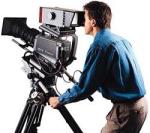
On December 24, 1996, the U.S. FCC adopted the major elements of the ATSC Digital Television (DTV) Standard, mandating its use for digital terrestrial television broadcasts in the U.S. Roughly 2 years later, the first digital TV broadcasts had begun, and the future of television had finally arrived in the United States.
At the time, the FCC did not mandate which of the 18 proposed HDTV and SDTV formats would be used, but all have been uniformly adopted by equipment makers and broadcasters.
The adoption of so many different TV formats has instilled confusion in the minds of many consumers. If the goal of an advanced TV system was to provide home users with clear, breathtaking images, then why has the FCC adopted a standard where broadcasters can transmit TV images with quality marginally better than the analog system?
The marginally better images refer to SDTV, an acronym for Standard Definition TV, which are a major part of the digital TV system in the United States. HDTV, not to be confused with SDTV, refers to images of pristine clarity roughly 10 times more detailed than the kind of TV Grandpa used to watch. When most people think digital, HDTV is what they think of, but so far that's rarely what they've gotten. In fact, HDTV broadcasting is considered optional in the eyes of the FCC. That's correct, a broadcaster never has to transmit an HDTV image for as long as they are broadcasting, according to current law. However, HDTV broadcasting is 'encouraged" by the FCC.
SDTV broadcasting does have a benefit; it could serve to bring terrestrial TV users more choices. Each broadcaster has been given a 6 MHz slice of spectrum from the great airwave pie. Surprisingly enough, this is the same amount of space that broadcasters have been using since the start of TV broadcasting, but in the analog world, this amount of bandwidth was barely enough to transmit a single 480i TV show. Now, a 6 MHz pipe could allow broadcasters to transmit many different channels at the same time. Sounds great in theory, but the catch is that they have to do it at lower quality since HDTV images take up much more space.
From a practical standpoint, not all signals need to be transmitted in HDTV. Think of all those great reruns of I Love Lucy, The Honeymooners, and Gilligan's Island that are watched in millions of homes across the USA every day. These shows were never produced in HD quality, so broadcasting them at HD resolutions yield no benefit to the viewer. Or, think of other programs that wouldn't benefit from HDTV. Do we need to see the afternoon news in HD? Some say yes, others say no. What about the Teletubbies? Surely a 2 year old doesn't care if the purse-carrying-purple-alien-teddy-bear is broadcast in 1,080 lines of resolution. In fact, if PBS decides to broadcast the Tubs in SDTV, then they could broadcast Sesame Street, Mr. Rogers, and Barney at the same time, thus giving parents and kids a choice of what they want to see.
However, not everyone feels that a broadcaster should be able to transmit more than one channel at a time. It seems that broadcasters could get all too used to running six different streams at once in hope to have something on that can appeal to everyone: Seinfeld for the twenty-somethings, news for the weather watchers, cartoons for the kiddies, sports for the buffs, and an infomercial pitching the latest diet pill for the remote control shopper. No one will deny the old adage that states, "more is better", but if a "broadcast-only" viewer wanted more choices, wouldn't they just get cable?
In reality, there is a place for both. SDTV has helped to bridge the gap between the analog and digital TV systems over the last few years, allowing broadcasters to be compliant with digital TV standards while they upgrade equipment to produce shows in HDTV quality. 2005 has had steady stream of HDTV broadcasts, especially now that more cable providers are retransmitting local HDTV stations through cable. The "broadcast only" TV home is few and far between, so why make a show HD when no one was able to watch it? It's not like homes don't have digital capable television sets, it's just that no one has been able to receive programming without an antenna (that's so 50's!).
It's unlikely that multicasting will become a common reality anyway. Cable and satellite providers will fight any legislation that requires them to carry multiple feeds from every local broadcaster. As long as that holds true, and people continue to demand HDTV programming for their new HDTV sets, SDTV will not end up as the future of television.
If only cable and satellite providers would force TNT, USA, Spike, and the rest to enter the era of HDTV...
Recent comments
-
Repair info on Green Blinking
-
Hi All~
-
I have a WS65513 with
-
My 32" TV, 2 years old, now
more
Connect With Techlore
Copyright © 2020




